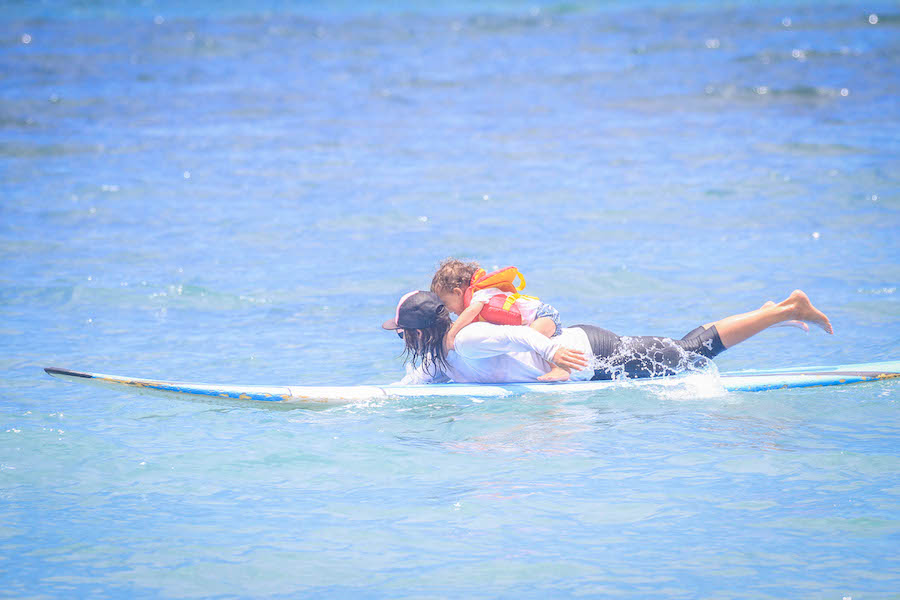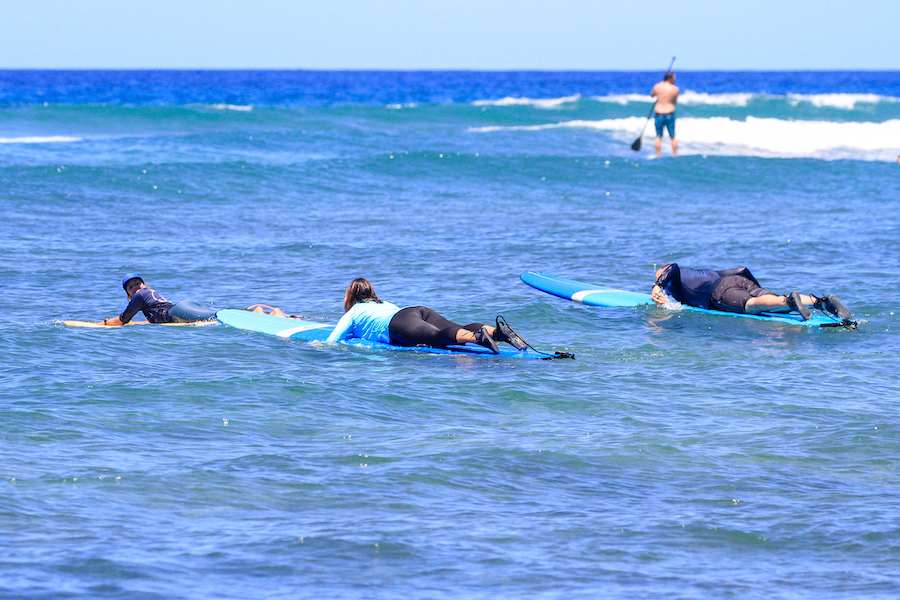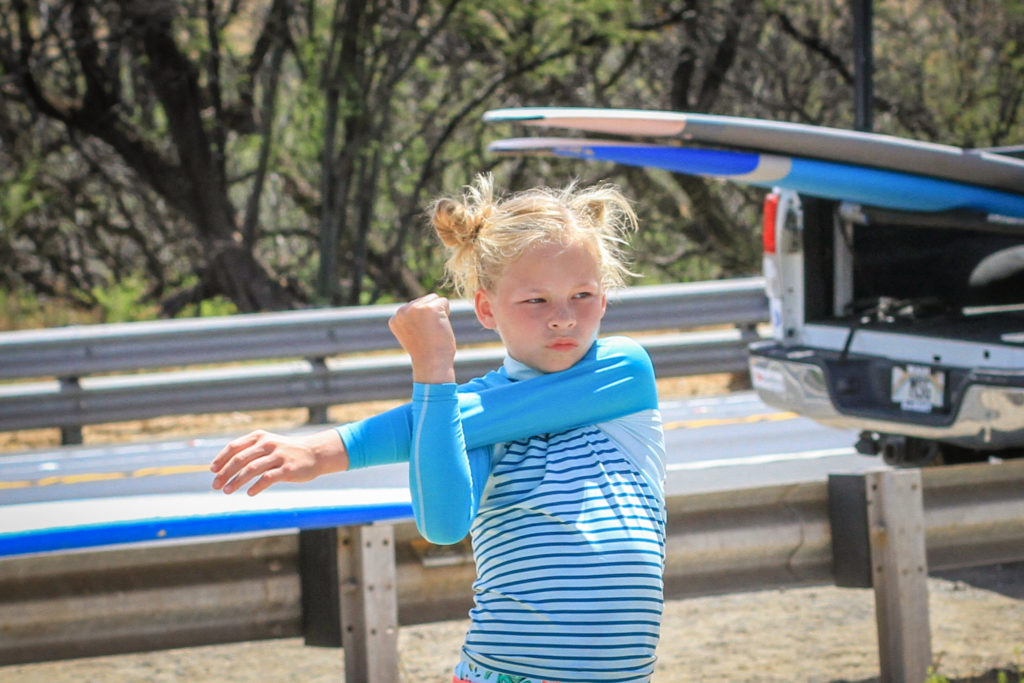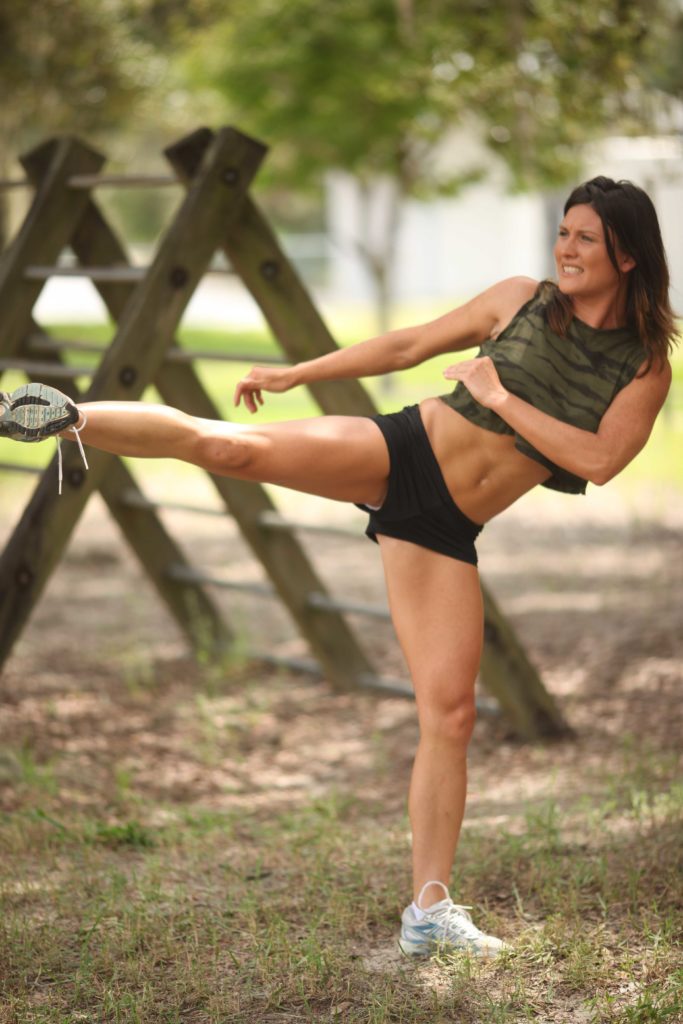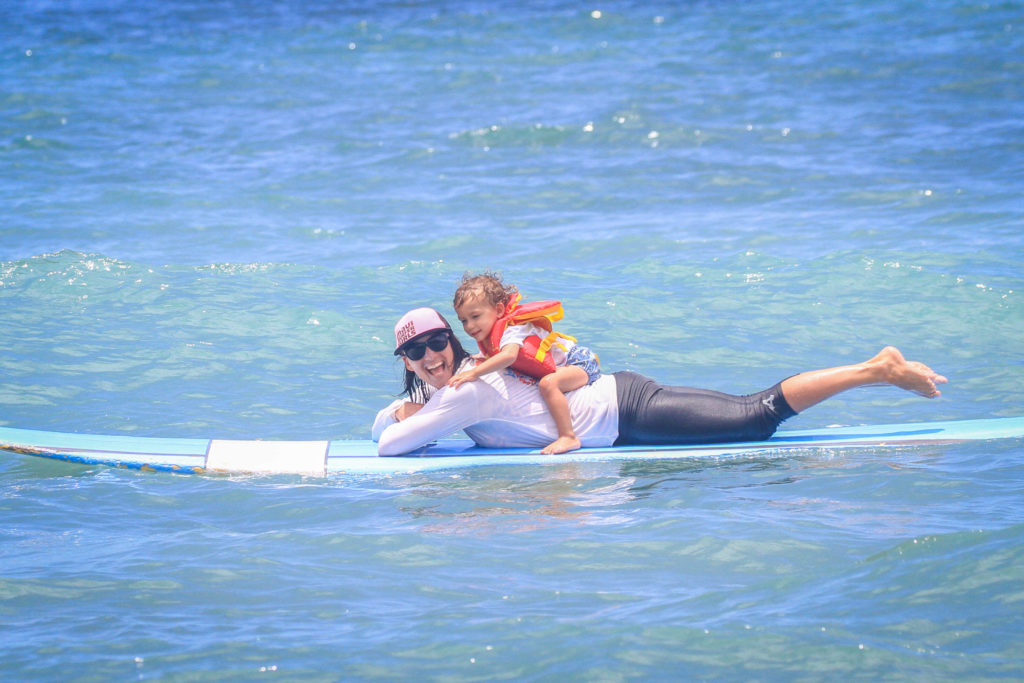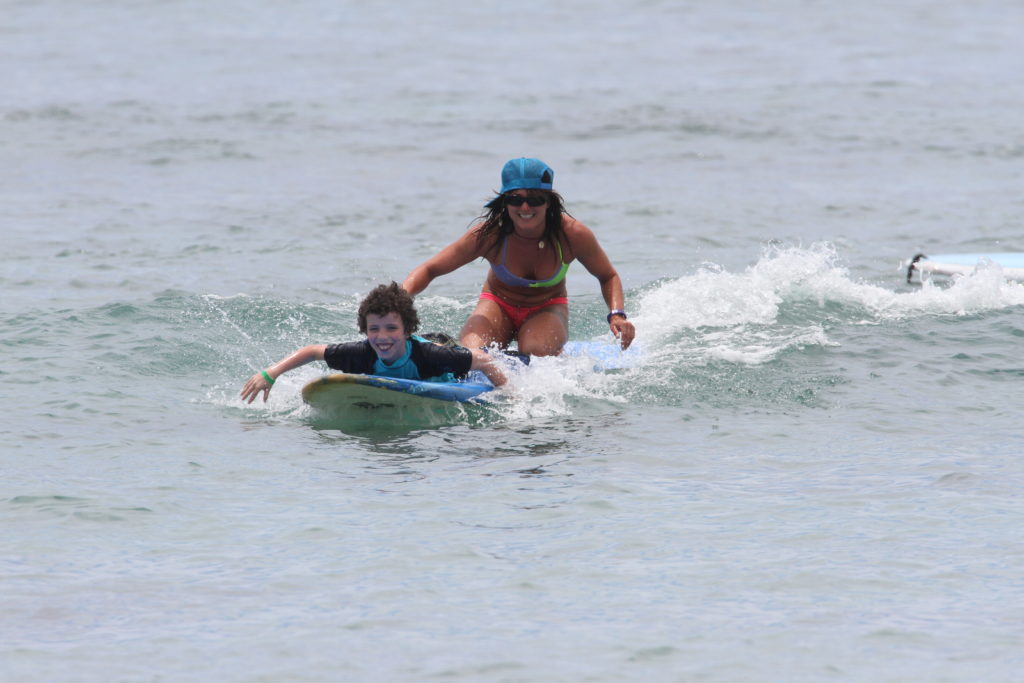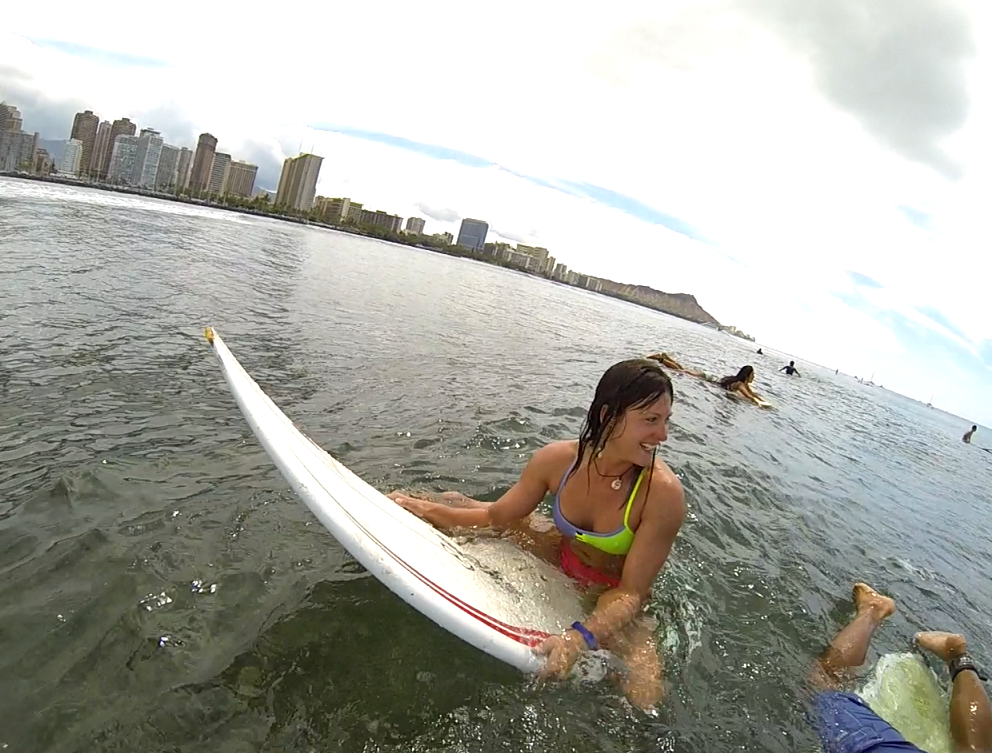By Raye Teyssier
Surfing is full of challenges. Balancing on the board, reading waves, working round other surfers, maneuvering in, out, and around the water: it’s all physically demanding. But many first-timers are surprised when they learn the most difficult part isn’t when you are surfing a wave; typically, for a beginner, the hardest part is the paddling.
85 to 90% of your energy spent in the water will be spent paddling and positioning… so essentially, the bulk of surfing is spent getting to where you want to be, and then staying there. Reading the waves, positioning, and syncing up your timing, is hard work, and if paddling is draining your energy, it becomes even more challenging. To an advanced surfer, paddling is effortless.. but to those who haven’t used those muscles before, it’s brutal!
So, how do you improve your paddle strength?
TECHNIQUE
Positioning: make sure you’re in the right spot on the board. Technically, when you are paddling out, your weight can be slightly farther forward than when you are paddling for a wave. Being too far forward creates drag in the nose; too far back and your whole board won’t be planing on the water. Keeping your weight positioned just right will allow you to glide smoothly.
Form: Head up, looking where you’re going (not resting on the board). Your shoulders should also be lifted, using your core to curve your back; your weight should be resting on your sternum as opposed to your chest. Be sure that your whole body is aligned on the stringer, not rolling or leaning to one side or the other. Finally, keep your feet together and out of the water. You don’t want to be dragging your ‘foot breaks’ while you are trying to accelerate!
Hands: blade your hands, fingers together or slightly spaced apart, and keep them firm as you dig through the water. You don’t want your wrists to get loose or floppy; think of them as the blade of a canoe paddle.
Follow through: continue stroking all the way through and past your body. Pulling your hand out early minimizes how far your strokes will propel you, and can even create drag. Short, fast strokes will get you nowhere! You want long, deep strokes instead; no surface splashing, really dig! Try to utilize every inch of your paddle, even using your fingers to ‘flick’ the water back behind you at the end.
STRETCH
Make sure you are limber before hitting the water! Stretching prior to an activity prevents injury and maximizes performance; stretching after activity prevents soreness. In fact, I believe the cool-down is more important than the warm-up, so don’t skip it! Dynamic stretches will benefit you more than static stretches. Staying hydrated will also allow your muscles to rid themselves of lactic acid more easily, so be sure you’re drinking plenty of water.
STRENGTH TRAINING
We could write a whole blog post on workouts for surfers! (…or maybe that’s a hint for what is coming next!) For now, we’ll keep it short and simple; shoulders, core, cardio, rotation! Calisthenic exercises are my personal favorite because you are typically working multiple muscle sets at once and utilizing your core. There are so many conflicting schools of thought on the ‘best’ ways to strength train, and some very interesting surf exercises circulating out there. However, my personal favorite training techniques utilize inverted postures, climbing, and body weight workouts. ANY workouts will help your surfing game, but remember, strength alone doesn’t make you a good paddler; you also need the flexibility to rotate your shoulders comfortably, and the balance of body weight and core to keep your shoulders up. I recommend adding 8 pull-ups (overhand), 6 kartwheels, and 4 handstand push-ups into whatever routine you have.
PRACTICE
To increase your paddle strength, most important of all is practice practice practice! The more you paddle, the better you get. Even when the waves are bad, it’s still beneficial to just hop in the water and play around. Practice moving around on different sized boards, noting the difference in stability and glide on longboards, shortboards, and funboards. If you don’t live near the ocean, you can paddle on lakes or even pools (hint for pool paddling; attach your board to the side of the pool so that it won’t move and do high-intensity increments, all while staying still).
As your paddling skills develop, you will hopefully shift into a whole new mindset; instead of dreading a session with lots of paddling, you will look forward to long treks and unique spots! You’ll learn to love paddling, as we all do (… or at the very least, not give it a second thought!)
Meet Raye
Raye has been teaching surf lessons since 2013, including Waikiki, Oahu’s fabled North Shore, and here on Maui; she is also an avid cyclist, a Capoeirista, and collegiate pole vault record-holder, and has taught a variety of other sports and fitness programs. Use discount code RAYE10 to save and your lesson, and don’t forget to request Raye as your instructor!




